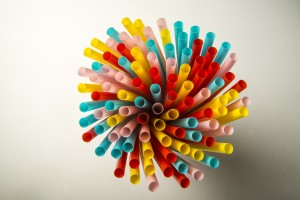If you tried to coun t all of the different types of plastic used around the world, you would be at it for a very long time. Science classifies plastics into two basic categories: thermoplastics, which can be melted and returned to their original state, and thermosets, which can’t. However, the sheer number of possible chemical combinations and polymerizations means thousands of different types of plastic exist, with more constantly being “discovered.”
t all of the different types of plastic used around the world, you would be at it for a very long time. Science classifies plastics into two basic categories: thermoplastics, which can be melted and returned to their original state, and thermosets, which can’t. However, the sheer number of possible chemical combinations and polymerizations means thousands of different types of plastic exist, with more constantly being “discovered.”
But if you look around the room you’re sitting in at this very moment, chances are good a large portion of plastic items in it are polyolefins — polymerized versions of basic olefins.
Polyolefins are everywhere
The most common type of thermoplastics, polyolefins are also the some of the most widely used type of plastic. In fact, polyethylene and polypropylene are the most ubiquitous plastics in the world, with variations of each used in a staggering array of products, from soda bottles caps to lab instruments.
All polyolefins start out life as simple olefins, unsaturated hydrocarbons composed of hydrogen and carbon held together by one or more carbon to carbon double bonds or triple bonds. Through polymerization processes, the olefins become high-molecular weight hydrocarbons — polyolefins. Of course, the olefin you polymerize determines what kind of polyolefin you end up with. For example, polyethylene is the product of polymerized ethylene.
Polyolefins have exceptional properties that make them star ingredients in a variety of products. Polyolefins are durable, heat resistant and able to withstand most kinds of chemical corrosion. They’re also considered non-toxic, making them particularly useful for applications like medical devices and food storage. They can be susceptible to oxidation, but a variety of anti-oxidant additives can fight that problem. Prolonged light exposure can also be a problem, but again, additives can help resolve those issues.
Most common polyolefins
Polypropylene and polyethylene are the most commonly used polyolefins.
You’ll find polypropylene in everything from drinking straws and food containers and reusable water bottles, to thermal underwear, roofing materials, marine ropes and carpet. The polymerized incarnation of propylene, polypropylene is both strong and flexible (hence its use in drinking straws), highly heat resistant (making it useful in laboratory testing applications) and lightweight.
Polyethylene (PE) is created through the polymerization of ethylene. It’s the most common type of plastic, showing up everywhere from plastic bags and bottles to insulation for electrical cables and water pipes.
Testing polyolefins
Of course, polymer testing plays an essential role in the research, development and marketing of anything made from plastics like polyolefins. For most types of plastic, gel permeation chromatography (GPC) is a useful way to measure the molecular weight of a material. Polyolefins, however, can be problematic in the laboratory, so high-temperature GPC is the testing method of choice when evaluating the molecular weight of any polyolefin.
With high-temperature GPC, we can analyze some of the most common and useful types of plastics in the world — polyolefins.
